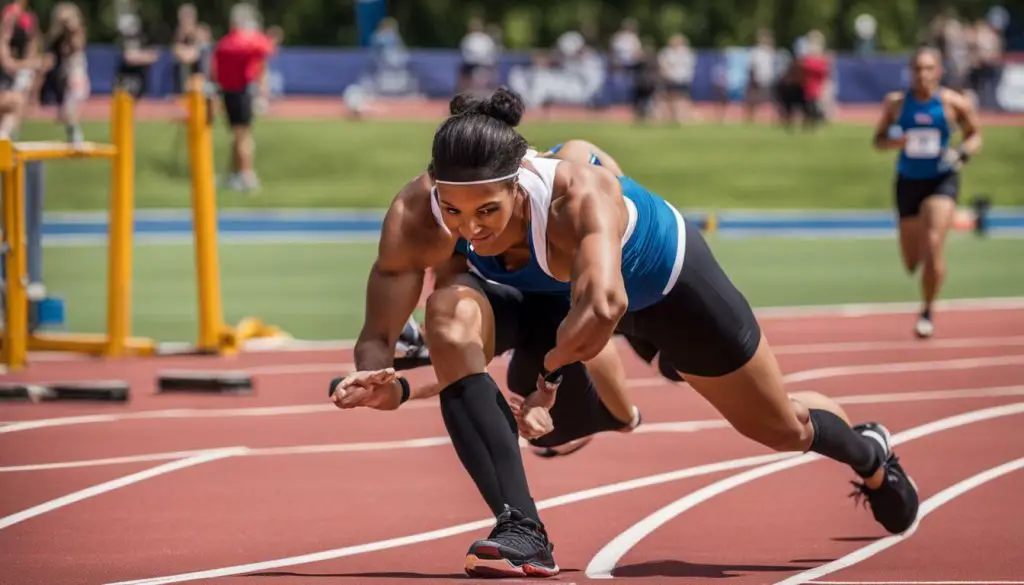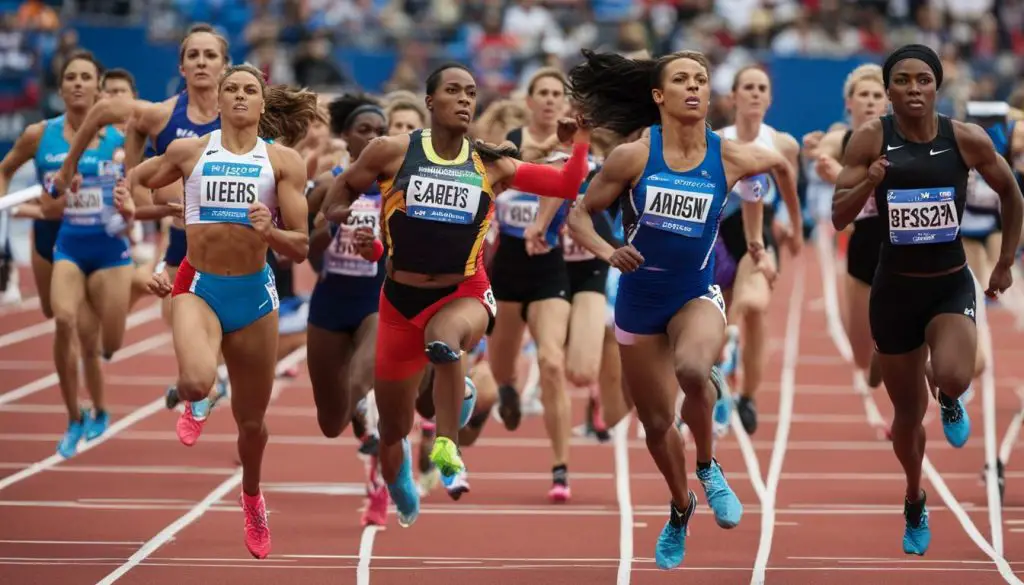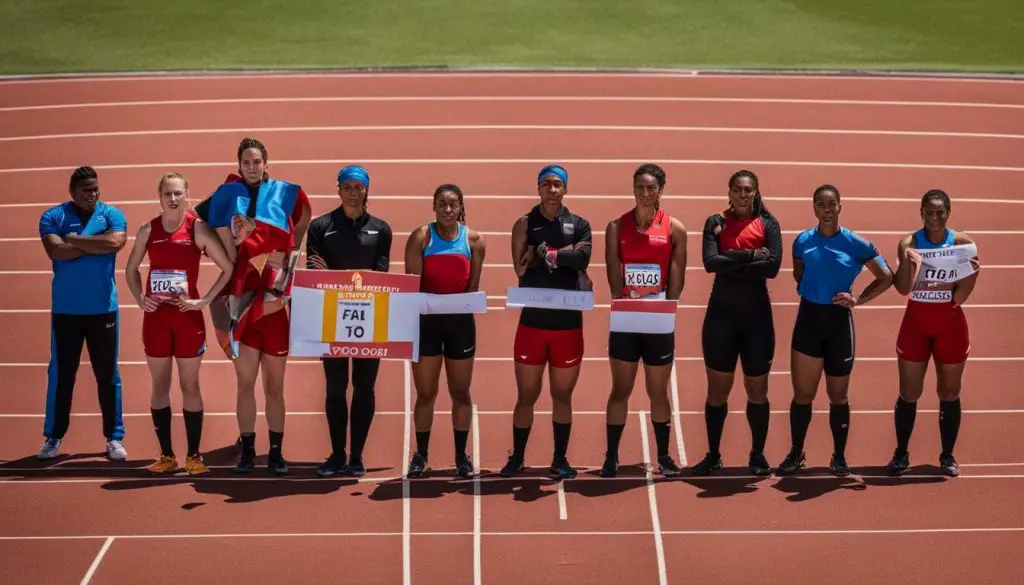The inclusion of transgender athletes in sports has sparked contentious debates, with concerns raised about fairness and competitive advantages. Some individuals question the fairness of allowing transgender athletes to compete in categories that align with their gender identity, citing potential advantages they may have over cisgender athletes. This controversy surrounding transgender participation in sports has led to varied policies and regulations across different states and sports organizations.
Gender identity plays a significant role in this discussion. The concept of gender identity refers to an individual’s deeply-felt sense of their own gender, which may not necessarily align with their biological sex assigned at birth. Transgender athletes, who identify with a gender different from their assigned sex, seek to compete in sports in a manner consistent with their gender identity.
Current policies and regulations pertaining to transgender participation in sports are inconsistent. While some states and sports organizations have implemented inclusive policies that allow transgender athletes to compete in accordance with their gender identity, others have implemented bans or restrictions. This disparity in approach further fuels the controversy surrounding transgender athletes.
The debate surrounding competitive advantages for transgender athletes centers around concerns related to physical attributes and hormone therapy. Some argue that transgender women, assigned male at birth, may have certain physical advantages such as strength and endurance, even after undergoing hormone therapy. However, the extent of these advantages and their impact on performance remains a topic of ongoing scientific research and discussion.
Existing studies suggest that hormone therapy can affect factors such as hemoglobin levels, which may impact endurance. However, the scientific consensus on the extent of these advantages and whether they can be fully mitigated remains elusive. It is a complex and nuanced topic that requires careful consideration.
Fairness and inclusion are at the heart of the transgender athlete debate. Supporters of transgender athletes argue that they should have the opportunity to participate in sports like their cisgender counterparts, promoting equality and inclusivity. On the other hand, opponents raise concerns about maintaining a level playing field and protecting the integrity of competitive sports.
In conclusion, the inclusion of transgender athletes in sports is a complex and multifaceted issue. The controversies surrounding fairness and competitive advantages continue to shape policies and regulations. As scientific research and societal attitudes progress, it is crucial to strike a balance that allows transgender individuals to participate in sports while ensuring fair competition for all athletes.
To understand the debates surrounding transgender athletes, it is important to first examine the concept of gender identity within the context of sports. Gender identity refers to an individual’s deeply felt sense of being male, female, or something beyond the binary spectrum. In sports, this becomes significant as traditional gender categories are used to determine eligibility and create a level playing field.
Gender identity is not solely determined by biological factors such as chromosomes or anatomy. It encompasses an individual’s internal sense of self, which may not align with the sex assigned at birth. For transgender individuals, their gender identity may differ from their assigned sex, leading to unique challenges when it comes to participating in sports.
It is crucial to recognize and respect the diverse experiences of transgender athletes. Inclusion and acceptance can create a more welcoming environment for all individuals, promoting fairness and equality in sports. However, the complexity of gender identity poses difficulties in creating clear-cut policies and guidelines that satisfy all stakeholders.

Current Policies and Regulations
The policies and regulations regarding transgender athletes’ participation in sports vary significantly, with some states implementing bans and others adopting more inclusive approaches. These regulations aim to address concerns about fairness and competitive advantage, while also promoting inclusivity and respect for gender identity.
Some states have implemented bans that restrict transgender athletes from participating in sports according to their gender identity. These bans argue that allowing transgender athletes to compete against cisgender athletes may create an unfair playing field. They argue that biological differences, such as muscle mass and testosterone levels, can provide transgender athletes with an advantage, especially if they have gone through male puberty.
On the other hand, several states and sports organizations have adopted more inclusive policies that allow transgender athletes to participate in sports based on their gender identity. These policies emphasize the importance of inclusivity, equality, and civil rights. They argue that transgender individuals should have the opportunity to compete in sports that align with their gender identity, just like any other athlete. These policies often require medical documentation and hormone therapy as a way to ensure fairness and address any potential competitive advantages.
| State | Transgender Athlete Policy |
|---|---|
| California | Inclusive policy. Allows transgender athletes to compete according to their gender identity as long as they meet certain criteria. |
| Texas | Restrictive policy. Requires transgender athletes to compete based on the sex assigned at birth rather than gender identity. |
| Oregon | Inclusive policy. Allows transgender athletes to compete based on their gender identity without additional requirements. |
These varying policies and regulations have sparked heated debates and legal challenges. Critics argue that bans may infringe on the rights of transgender individuals and perpetuate discrimination. Supporters of bans believe they are necessary to maintain fair competition and protect the integrity of women’s sports in particular.
It is important to note that the topic of transgender athletes in sports is complex and multifaceted. To truly address concerns about fairness and inclusion, it is crucial to consider the perspectives and experiences of all athletes involved, as well as seek ongoing dialogue and research to inform future policies and regulations.

The debate on transgender athletes centers around the perceived competitive advantages they may have, raising questions about fairness in sports and the potential disadvantages for cisgender athletes. Critics argue that transgender women, who were assigned male at birth but now identify as female, may maintain physical advantages such as strength and muscle mass even after undergoing hormone therapy. This has led to concerns about an uneven playing field and the potential impact on cisgender women athletes.
However, it is important to note that there is limited scientific research on the performance of transgender athletes, making it difficult to draw firm conclusions. Existing studies suggest that some advantages may persist for trans women, particularly in areas like strength, which could impact certain sports where physical prowess is crucial. Hemoglobin levels, which affect endurance, can also be influenced by hormone therapy.
The extent of these advantages and whether they can be fully mitigated is a matter of ongoing debate. Supporters of transgender inclusion argue that hormone therapy and other eligibility criteria help level the playing field, ensuring fair competition for all athletes. They emphasize the importance of inclusivity and respecting an individual’s gender identity.
Factors impacting athletic performance
Several factors can influence athletic performance, irrespective of an individual’s gender identity. These include genetics, training methods, access to resources, and natural abilities. It’s crucial to consider these factors holistically rather than solely focusing on gender identity.
To better understand the complexities surrounding competitive advantages, let’s consider a hypothetical example. A cisgender woman with naturally high testosterone levels may possess physical attributes similar to those of a transgender woman. In this scenario, determining a fair and inclusive policy becomes more challenging, as it demonstrates that advantages or disadvantages can exist among athletes of any gender identity.
In conclusion, the debate surrounding transgender athletes and competitive advantages highlights the need for thoughtful consideration and comprehensive policies that balance fairness, inclusion, and individual rights. As scientific research continues to evolve and societal attitudes shift, it is crucial to foster open dialogue and find solutions that promote equitable opportunities for all athletes.
| Advantages | Disadvantages |
|---|---|
|
|
Scientific Research and Performance
While there is limited scientific research on the performance of transgender athletes, studies suggest that trans women may retain some advantages even after undergoing hormone therapy. Factors such as strength and endurance have been the focus of investigations, with varying results.
One study conducted at the Karolinska Institute in Sweden found that even after one year of hormone therapy, trans women still had physical advantages over cisgender women in terms of muscle mass and resulting strength. The research highlighted the potential impact of pre-existing physical attributes, suggesting that hormone therapy alone may not fully eliminate competitive advantages.
Another area of interest is the effect of hormone therapy on endurance-related factors. A study published in the British Journal of Sports Medicine suggests that while hormone therapy can reduce hemoglobin levels in trans women, which could affect endurance, there is no clear consensus on the extent of the advantage conferred.
It is important to note that these studies represent only a small portion of the available research. Further investigation is needed to gain a more comprehensive understanding of the performance of transgender athletes in different sports. The complexities of biological differences, hormone therapy, and the wide range of athletic abilities among individuals make it challenging to draw definitive conclusions.

| Study | Focus | Findings |
|---|---|---|
| 1 | Muscle mass and strength | Trans women may retain advantages even after hormone therapy. |
| 2 | Endurance-related factors | Inconclusive findings on the extent of advantages in endurance. |
It is clear that more research is necessary to inform policies and regulations regarding transgender participation in sports. The existing studies offer initial insights into the potential advantages that may persist even after hormone therapy, but further investigations are needed to reach broader consensus and ensure fair competition for all athletes.
Mitigating Competitive Advantages
Sports organizations have implemented various measures, such as hormone therapy and eligibility criteria, to address potential competitive advantages of transgender athletes and ensure fair competition.
One of the key measures is hormone therapy, which transgender athletes may undergo as part of their transition. Hormone therapy involves taking hormones, such as testosterone or estrogen, to align with their gender identity. This can help reduce some of the physical advantages that transgender athletes may have over cisgender athletes.
However, the impact of hormone therapy on athletic performance is a topic of ongoing debate. While hormone therapy can reduce muscle mass and strength in trans women, it may not completely eliminate the advantages they may have acquired during male puberty. A study published in the Journal of Medical Ethics found that trans women may still retain some advantages in areas such as strength even after hormone therapy. Therefore, it is necessary to consider individual differences and the specific sports when assessing competitive advantages.
To ensure fair competition, sports organizations have also established eligibility criteria that transgender athletes must meet. These criteria often involve specific requirements related to hormone levels and time since the initiation of hormone therapy. For example, the International Olympic Committee (IOC) requires trans women athletes to demonstrate that their testosterone levels have been below a certain threshold for at least 12 months before competing. Such criteria aim to strike a balance between inclusivity and fairness.

While efforts have been made to address competitive advantages, it is important to recognize that achieving complete parity between transgender and cisgender athletes may be challenging. As a Journal of Medical Ethics study states, “No hormone therapy protocol can eliminate all the advantages that male puberty confers.” Therefore, a nuanced approach is needed that takes into account individual athletes’ experiences, the specific sport, and the principles of fair competition.
As with any policy, finding the right balance is crucial. It is essential to strike a balance that allows transgender athletes to participate in sports while mitigating any potential competitive advantages. Sports organizations, policymakers, and medical professionals continue to monitor and evaluate the impact of different measures to ensure fairness and inclusivity for all athletes. Ongoing research, dialogue, and collaboration among stakeholders are key to promoting a more equitable and inclusive sporting environment.
Perspectives on Fairness and Inclusion
The inclusion of transgender athletes in sports sparks heated debate, with differing opinions on fairness, inclusivity, and the rights of transgender individuals. Critics argue that allowing transgender athletes to compete in accordance with their gender identity may create an unfair advantage. They express concerns about physical differences, such as strength and endurance, which some believe could give transgender athletes an edge over their cisgender counterparts.
On the other hand, proponents of inclusion emphasize the importance of equal opportunities for transgender individuals in sports. They argue that excluding transgender athletes based on their gender identity goes against principles of autonomy and human rights. Inclusive policies aim to create a level playing field and ensure that transgender athletes can participate in sports without facing discrimination or unnecessary barriers.
The debate surrounding transgender athletes often becomes highly politicized, with strong opinions on both sides. While some argue for strict eligibility criteria and performance limitations, others advocate for a more nuanced approach that takes into account individual differences and the complexities of gender identity. The lack of consensus on this issue reflects the challenges in finding a balance between fairness and inclusivity that satisfies all stakeholders.

It is worth noting that the limited scientific research available on the performance of transgender athletes adds to the complexity of the debate. Existing studies suggest that transgender women may retain some advantages, such as strength, even after undergoing hormone therapy. However, the extent of these advantages and whether they can be fully mitigated through hormone therapy remains a topic of ongoing research and discussion.
Ultimately, the question of fairness and inclusion in sports for transgender athletes is multifaceted and requires careful consideration. Balancing the rights and well-being of transgender individuals with the desire for fair competition is a complex task that will likely continue to fuel debates and shape policies in the future.
Conclusion
The inclusion of transgender athletes in sports remains a complex and contentious issue, requiring ongoing discussion and consideration of fairness, inclusivity, and the rights of all athletes. Concerns about competitive advantage have led to varying policies and regulations across different states and sports organizations, with some implementing bans and others adopting more inclusive approaches.
While there is limited scientific research on the performance of transgender athletes, existing studies suggest that trans women may maintain some advantages in areas such as strength, even after undergoing hormone therapy. Factors like hemoglobin levels, which affect endurance, can be influenced by hormone therapy, but the extent of the competitive advantage and whether it can be fully mitigated is still debated.
The topic of transgender participation in sports is highly politicized, and opinions on fairness and inclusion vary. Some argue that allowing transgender athletes to compete is essential for promoting diversity and equality in sports, while others express concerns about the potential impact on fair competition. Striking a balance that ensures equal opportunities for all athletes while addressing competitive advantages is a complex task.
Moving forward, it is crucial to continue studying the performance of transgender athletes and refining policies and eligibility criteria to ensure fair and inclusive participation in sports. As societal attitudes and understanding of gender identity evolve, ongoing dialogue and consideration of all perspectives will be necessary to navigate the challenges and complexities surrounding transgender athletes in sports.
FAQ
Why are transgender athletes considered unfair?
Transgender athletes are considered unfair by some due to concerns about competitive advantage.
What are the current regulations regarding transgender participation in sports?
Current regulations regarding transgender participation in sports can vary, with some states implementing bans while others adopt more inclusive policies.
Is there scientific research on the performance of transgender athletes?
There is limited scientific research on the performance of transgender athletes, but existing studies suggest that trans women may maintain some advantages in areas such as strength even after hormone therapy.
Can hormone therapy fully mitigate any competitive advantages for transgender athletes?
There is no consensus on the extent of the competitive advantage and whether it can be fully mitigated. Factors such as hemoglobin levels, which affect endurance, can be affected by hormone therapy.
Why is the debate surrounding transgender athletes highly politicized?
The topic is highly politicized, and opinions on fairness and inclusion vary.
Source Links
- https://www.npr.org/2023/04/09/1168858094/arguments-that-trans-athletes-have-an-unfair-advantage-lacks-evidence-to-support
- https://www.dw.com/en/fact-check-do-trans-athletes-have-an-advantage-in-elite-sport/a-58583988
- https://www.wionews.com/sports/incusiveness-or-unfair-advantage-debate-over-trans-athletes-in-sports-intensifies-492057